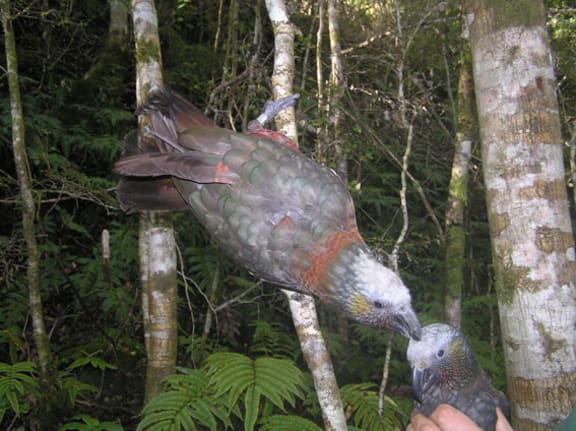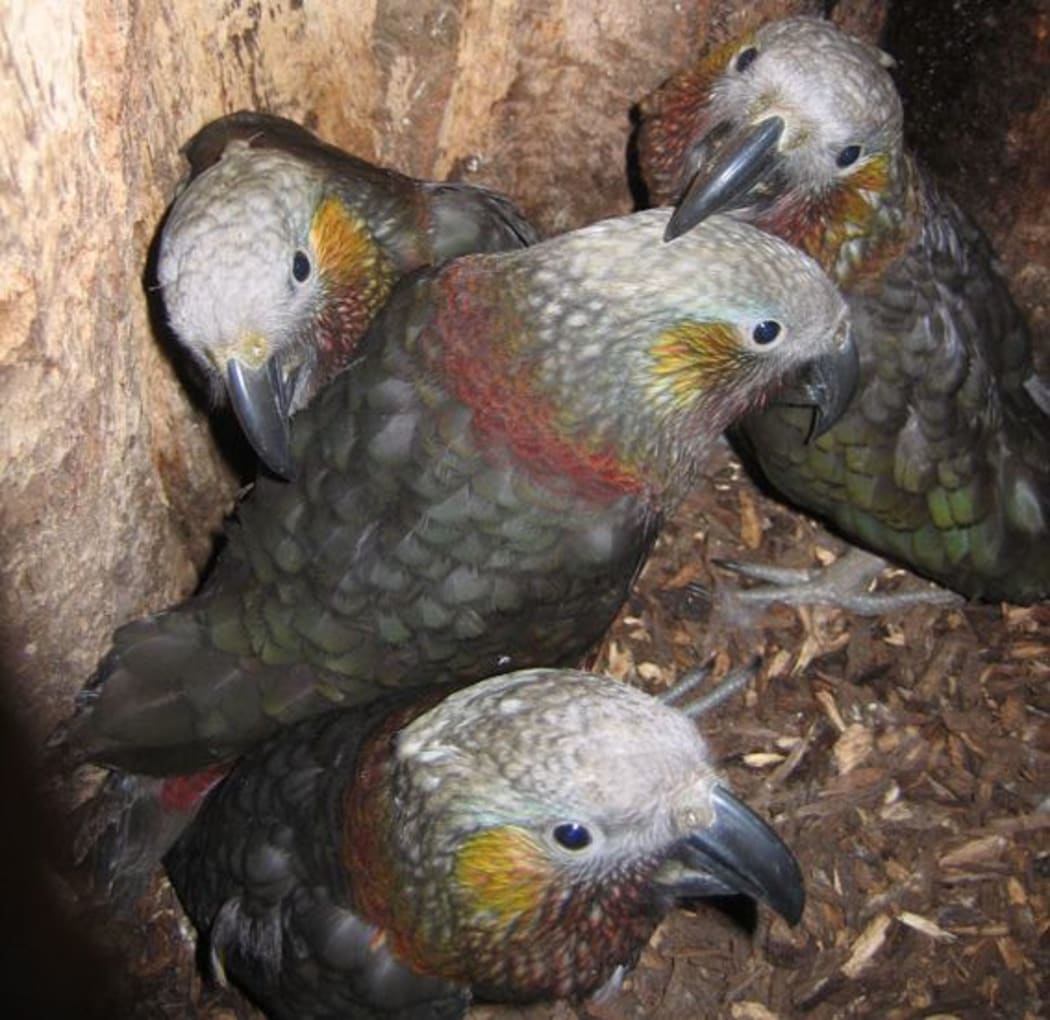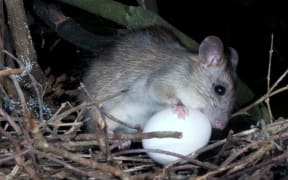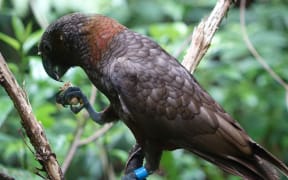The Department of Conservation (DOC) says the population of South Island kākā in a Fiordland forest has had a spectacular comeback.

A female kākā with a transmitter Photo: DoC
DOC said when surveyed 10 years ago the native parrot population at Waitutu Forest was very unbalanced, with few females (the male to female ratio was 6:1) and young birds.
But a DOC scientist, Terry Greene, said a fresh survey last year had found a four-fold increase in the proportion of female kākā (the male to female ratio had reduced to 1.7:1) and 20 times as many juveniles.
"It's tremendously significant, you know it means that the whole demographics of the population has shifted, it means that we're getting a lot more younger birds in the population and you know the long-term prognosis for persistence is much greater."
Mr Greene said the rebound was spectacular, and showed a major programme of pest control in the Waitutu Forest was working.
He said aerial 1080 poison control was done three times between 2010 and last year, and there had also been significant ground trapping.
Mr Greene said he hoped the pest control could continue because it was making all the difference for kākā and many other birds there.

Kākā fledglings. Photo: DOC



